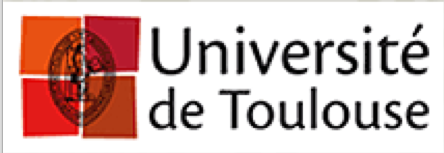



Jacques Gautrais
Mail contact on domain gautrais.net
Academic Researcher (CNRS — France)
Université de Toulouse - CNRS (UMR 5169)
Collective motion in fish
I am working with the same goal on fish schooling behavior as for sheep collective motion : using experimental data to quantify the individual response function, depending on the neighbors' position, speed, behavioral state... The aim is to understand how individual rules drive the collective pattern.
As a first step, I have worked on modelling the spontaneous behavior of the fish Kuhlia mugil confined in a circular tank (4-m wide).
The model involves an Orstein-Uhlenbeck process of the turning speed, and can be used to embed the interaction with the tank wall.
Collaborations with
• Guy Theraulaz, Christian Jost & Ugo Lopez (PhD) in my lab
• Marc Soria (IRD)
• Hugues Chaté and coll. (CEA Paris)
• Richard Fournier & Stéphane Blanco (Laplace, Toulouse)
• Pierre Degond & Sébastien Motsch (IMT, Toulouse)
We have next analysed the individual stimulus/response function which explain the collective patterns observed in groups of 2, 5, 10, 15 & 30 fish.
This analysis revealed an implicit balancing of neighbors position and orientation on the turning speed of fish, an unexpected transition between schooling and shoaling induced by a change in the swimming speed, and a group-size effect which results in a decrease of social interactions among fish as density increases. This work is published in PLoS Comp. Biol.
Speed-induced phase transition.
The mere variation of the swimming speed makes the group switch from swarming to schooling patterns, and back.
Speed-induced flash expansion.
The fast increase and decrease of the swimming speed make the group display a flash expansion.


